18 August 751 BC
Rape of the Sabine women.
18 August
Feast of St. Helena
18 August 1778
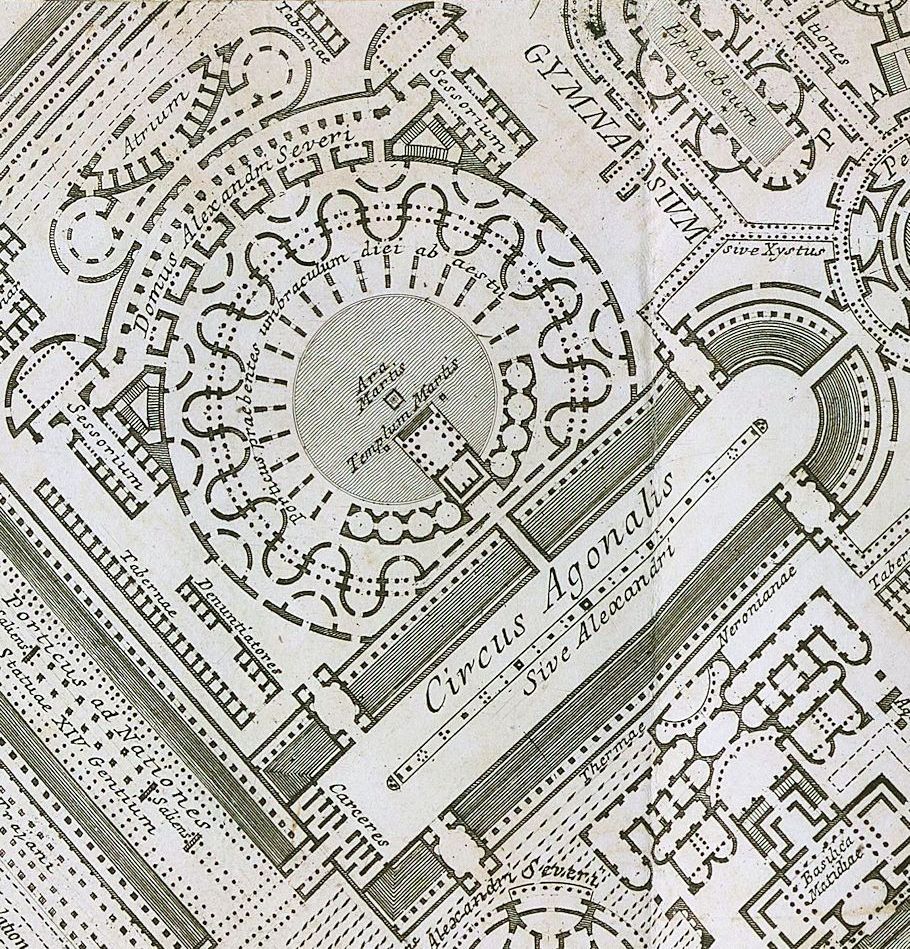
"Why did you put the Domus Alexandri Severi and two Sessorium along with the Circus Agonalis sive Alexandri all around the Ara Martis? The circus is in the right place, but the Domus Alexandri Severi and the Sessorium were in a whole other part of Rome."
"Well Laura, that's a very good question. You actually found some of my inverted clues."
"Inverted clues? What are you talking about?"
"Read the Vita di Eliogabalo and Vita Severi Alexandri in the Historia Augusta. That should help you figure it all out. Which reminds me: if anyone knows where Francesco is, tell him to go to Santa Croce in Gerusalemme, before he comes back, to see if anyone's been digging around the circus out there."
Artifacts of the Bianconi vs Piranesi 'Circus of Caracalla' affair 1772-1789
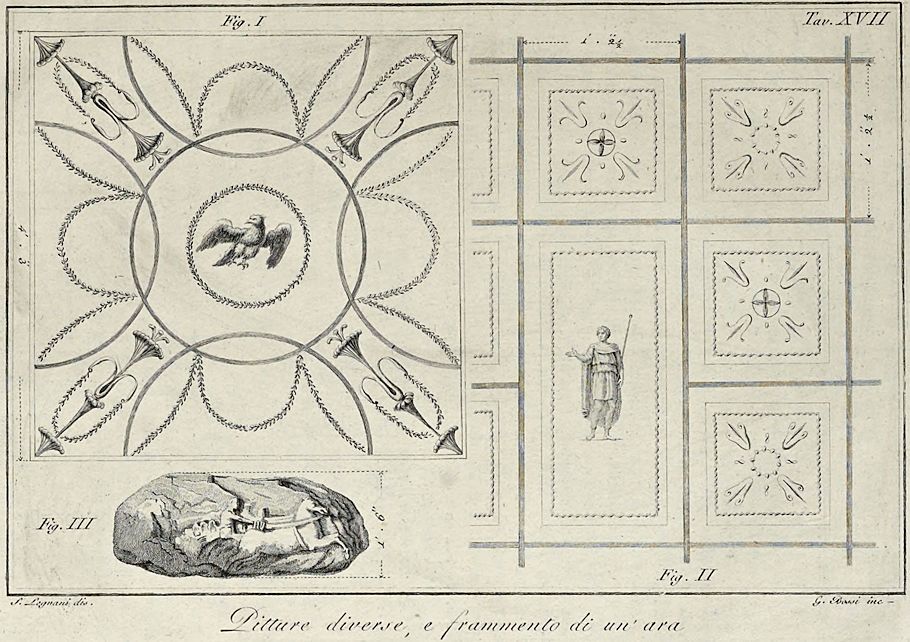
Tavola XVII Different paintings, and fragment of an altar.
48 y.o. Francesco Piranesi 1806
Le Antichità della Magna Grecia Parte II
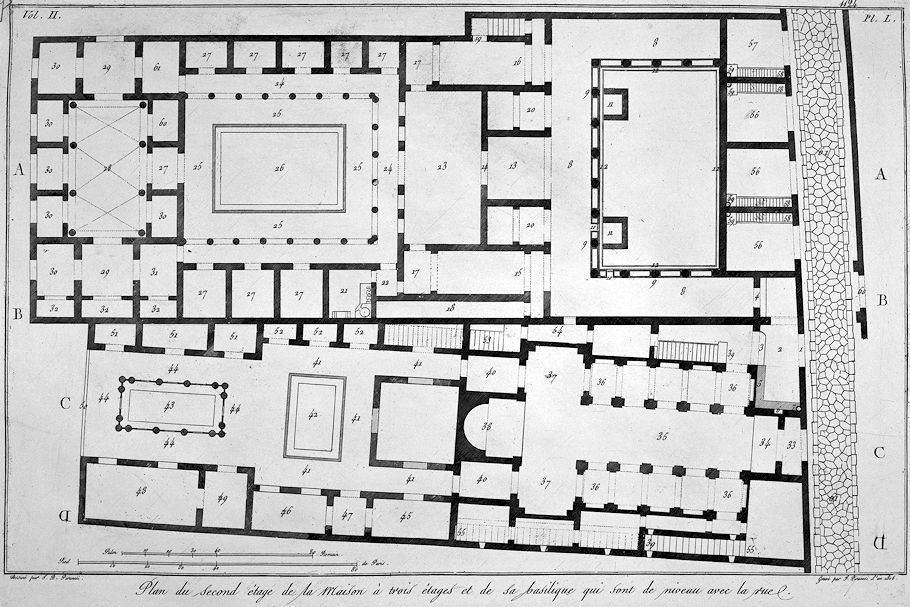
Plan of the second floor of the three-storey house and its basilica which are level with the street.
Drawn by G.B. Piranesi
Engraved by F. Piranesi Year 1806
18 August 1812 Tuesday
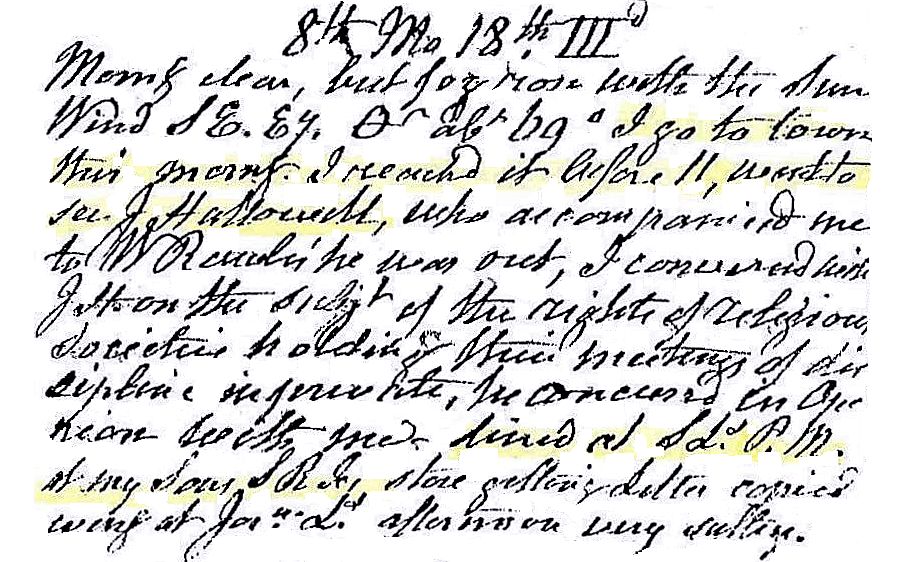
Morning clear, but fog rose with the sun. Wind SE Eerly, temperature about 69°. I go to town this morning. I reached it about 11, went to see J Hallowell who accompanied me to W Rawls'; he was out. I conversed with JH on the subject of the rights of religious societies holding their meetings of discipline in private, he concurred in opinion with me. Dined at SL's. PM at my son's SRF store getting letter copied. Evening at Jos. L's. Afternoon very sultry.
18 August 1977
Arrived in Venice at 8:30.
18 August 1998
Porticus Neronianae and the circle/square juncture, etc
I noticed today while taking inventory of all my databases, that the cruciform Porticus Neronianae is not only somewhat similar to the Villa Rotunda, but also seems to be generated by the circle/square juncture diagram.
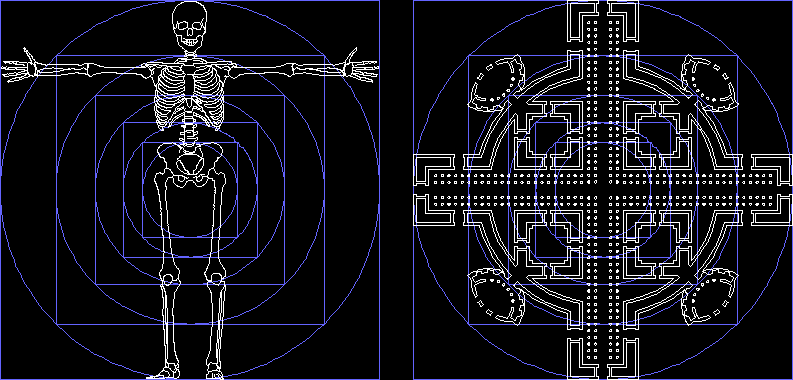
18 August 2001
damnatio memoriae and palimpsest
In doing further (re)reading of material on Helena and other Neo-Flavians, in Drijvers' Helena Augusta (1992) on p. 49 there is a 'reprint' of inscription CIL X 678. This is the same evidence of damnatio memoriae where we have examples of both the dm of Crispus and Fausta. While there are more extant examples of the dm of Crispus, this is the only extant example of Fausta' dm. As I mentioned the other day, I went to look at all the Crispus and Fausta dms within the CIL at Temple U's library. Since those books are enormous, I only photocopied CIL X 678. There a fair amount of Latin commentary that goes with the inscription, and some of the commentary is (as I found out last night) translated in Drijvers' book.
Not only were the words FAUSTA and UXORI (wife) erased, but they were replaced with HELENAE and MATRI. Thus, not only do we have here an example of damnatio memoriae, but an example of palimpsest as well. Question: is it a fairly common occurrence within other examples of dm for there to be a palimpsest as well, or is this more part of 'rare' damnatio memoriae subset?
Since CIL X 678 is the only extant example of Fausta's dm, I wonder if it might also be of some significance that it is actually a dm plus palimpsest. For example, could it be that Fausta's 'erasure' from memory is integral with Helena's 'inscription' into memory. Of course, on the immediate level, this tight connection appears obvious, but I'm still looking for other aspects and explanations that may enhance the understanding here. To sharpen the focus, I'm aware that there are many examples of palimpsests within inscriptions, so I'm more interested in examples where specific names/persons manifest a damnatio memoriae plus palimpsest combination.
ps
I also read last night in Pohlsander's Helena: Empress and Saint (1995) on p. 151: "The feast of the Invention of the Cross was previously observed in the West on 3 May but was suppressed by Pope John XXIII in 1960." Could this be considered one of the new forms of damnatio memoriae, or is it an example of purging history of what didn't happen? Is there a name for the act of purging history of what didn't happen?
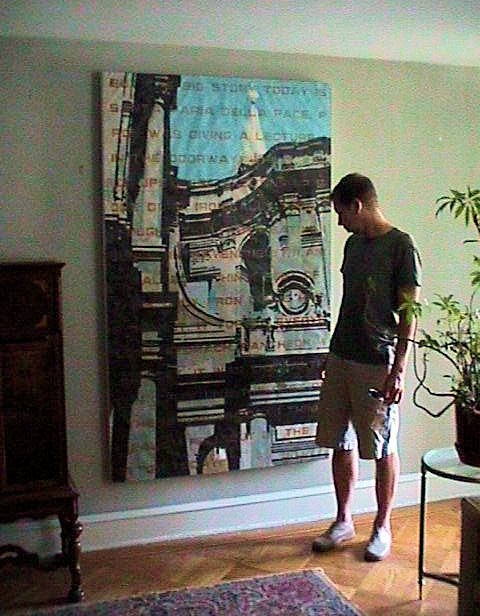
re-reading VITA CONSTANTINI Book III
The 'epicenter' of my hypothesis that Helena died late July 326 (1675 years ago) in Rome during the end of Constantine's Vicennalia celebration there, is with a re-reading, and thus new interpretation, of Eusebius' Vita Constantini Book III. I'm looking at two editions of this text, the one online at www.newadvent.org/fathers (which does not offer the source edition of this text, but no doubt it is an older, copyright free text) and Cameron & Hall's Eusebius: Life of Constantine (1999). It is in book III of the VC that Eusebius writes about the Council of Nicaea, church building in the Holy Land, Helena, and other church building in the East along with destruction of pagan worship/ritual sites. The deaths of Crispus and Fausta fit within this time frame, but are not mentioned. Through various other readings, plus Cameron and Hall's commentaries, I've come to understand that the sequence of Book III is not considered to follow a strict chronology, and just what the correct chronology might be has been much addressed in recent studies. I'm testing the sequence of Book III as if it is written by Eusebius in chronological order.
For starters, I point out that in 'chapter 23', which is between the end of the Council of Nicaea and the beginning of the Holy Land Church building accounts, Eusebius writes:
"He [Constantine] also wrote countless other things of the same kind, and composed a great many letters. In some he gave instructions to bishops about what affected the churches of God; but on occasion he also addressed the congregations themselves, and then the Trice-blessed would call the laity of the Church his own 'brothers' and "fellow-servants'. But there may be an opportunity to assemble these in a special collection, so as not to disrupt the sequence of our present account."
Eusebius never did assemble the letters, although there are many letters by Constantine interspersed throughout the rest of Book III and Book IV of the VC. What's really interesting is that modern scholarship believes that the un-chronological sequence of Book III begins with the chapters immediately after what Eusebius wrote above. Was Eusebius then acting against his own intentions? Or are modern historians of the life of Constantine just better historians than Eusebius? No offense, but lets see what happens if we take Eusebius for his word.
In chapter 47 Eusebius writes about what appears to be Helena's conversion to Christianity prompted by Constantine himself. Since I believe that Helena (along with Eutropia, Prisca, and Valeria--all the (first) wives of Diocletian's tetrarchy) was a Christian believer well before 28 October 312, the following passage gives me great pause.
"He [Constantine] deserves to be blessed, all else apart, for his piety to the one who bore him [i.e., Helena]. So far as he made her God-fearing, though she had not been such before, that she seemed to him to have been a disciple of the common Saviour from the first..."
Last night, in reviewing the case of the 'downfall' of Eustathius, bishop of Antioch, and it's seeming connection to his having said something about Helena, it is mentioned that Eustathius was anti-Arian while Helena seems to have been pro-Arian, and thus maybe Eustathius said something along these lines. [The fall of Eustathius occurred sometime 326-328, and is one of the factors that leads modern scholars to believe that Helena was in the Holy Land/East during that period. I think that Eustathius did fall because he said something about Helena, but that his real crime was that he said something about Helena after her death in Rome July 326. In other words, Eustathius broke the 'silence' regarding Helena and the Cross that was somehow enforced by Constantine, and Eustathius' losing his see is a clear example to those living then under Constantine of what will happen to you if you too break the 'silence'. Interestingly, it is Athanasius of Alexandria that first tells us of the Eustathius/Helena connection, and he was also a supported of Eustathius. Athanasius was exiled to Trier (where he might not be heard so well?) during the latter years of Constantine's life.]
Anyway, back to Constantine's conversion of Helena, I'm now wondering whether what Eusebius meant is that, because of Constantine and the Council of Nicaea, Helena died no longer being pro-Arian.
Steve Lauf
ps
the two excerpts above from the Vita Constantini are from Cameroun & Hall (1999).
18 August 2003
Re: why building another church (any kind)
Patrick, allow me to clarify my "building another church - in protest(ant)" post.
After all the recent 'talk' here about the enormity of the present St. Peter's Basilica in the Vatican (remember the first St. Peter's Basilica was 'built' by St. Helena, whose feast is celebrated today within the Roman Catholic Church), I began to wonder how such an enormous undertaken becomes accomplished, and that is when I remembered Luther's 95 Theses. I first read the 95 Theses a few years ago online, and I was surprised at all the references to the building of St. Peter's. Construction of the basilica was funded (partly, I assume) by the Vatican's selling of indulgences--
Indulgences alleviate the time one has to spend in Purgatory (if that's where one winds up), thus quickening one's arrival into Heaven. For example, I remember from catechism class that saying the Hail Mary prayer is worth an indulgence of three years (or something like that). In the early 1500s, while the old St. Peter's was being demolished and the new one was going up, Roman Catholics throughout Europe could buy Indulgences (maybe $10 got you 10 years indulgence), and the money was to fund the construction of the new Vatican basilica
--and Luther "protested" against this, thus essentially initiating Lutheranism ("building another church") and Protestantism in general.
(for me at least) It is ironic (and worth remembering) that the physical building of one great church at the same time brought about the establishment of a 'protest[ant]' church.
The epilog excerpt from Homo Ludens was included because Martin Luther personifies completely the spoil-sport, thus giving credence to the whole spoil-sport notion.
In no way did I intend to advocate the building of another church now.
Howard, in his "A Revolution in Electric-Based Power...," appears to appreciate the "lesson" of Luther/the spoil-sport, and relates this to the workings and sustaining of democracy, and I have to agree with him.
That said, wouldn't it be great if radical change today could be brought about by simply posting a 95 point theses on the door of a church!
Well, it wasn't exactly just the posting of the Theses. The Vatican made the huge mistake of selling the Indulgences in the first place. Plus Luther did subsequently work hard at evangelism, e.g., translating the Bible from Latin to German--the first such translation ever into a modern vernacular.
The more things change, the more they stay the same?
18 August 2005
sacred or profane
Is Madonna falling off a horse sacred or profane?
18 August
Happy circa 2750th Anniversary of the Rape of the Sabine Women!
Did you know that the tradition of a groom carrying his bride over the threshold is a reenactment of the rape of the Sabine women?
sacred or profane?
You know, it just might be true to say that Eutropia and Helena were the first women architects of sacred architecture. Eutropia first in the context of Rome where an inversion of the old sacred (Pagan) into the new sacred (Christian) occurred. And Helena with a creativity of her own in the context of the renewed Holy Land. Eutropia and Helena were very good and close friends.
18 August 2013
Why do you think you're creative?
I'm just starting to read a collection of critical essays on James Joyce, and so far it's interesting to see how Joyce's unique creativity seems to induce a creativity from the essayists that they might not normally have. I've sometimes noticed a similar effect when reading critical essays on Duchamp. Philippe Duboy's Lequeu: An Architectural Enigma is perhaps the apotheosis of this kind of critical effect creativity.
Is it then a fair hypothesis that one's critical deliberation of a unique creativity might well engender an as yet uncommon creativity from oneself?
18 August 2022
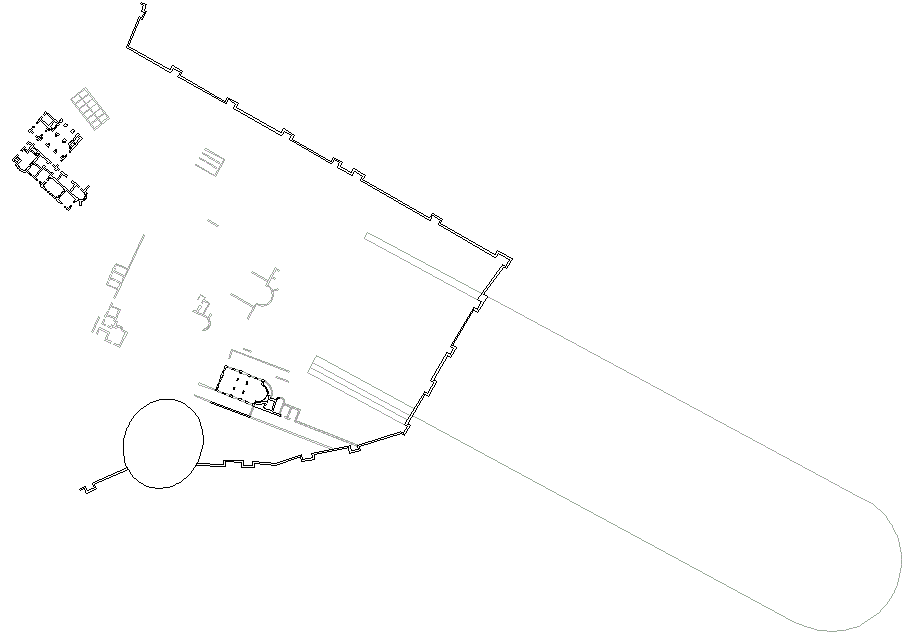
Thermae Helenae, Amphitheatrum Castrense, Basilica Sessorianum, Circus of Elagabalus
18 August 2023 Friday
. . . . . .
|